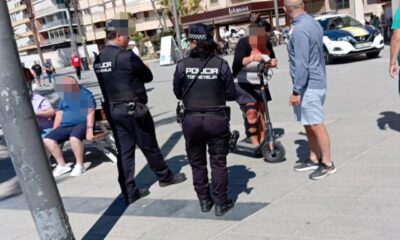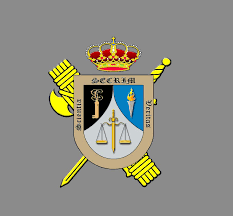

Driving in Spain
It’s the season for flashing lights, so…
As it’s the season that many of us will be in awe of the flashing lights adorning Christmas trees and other festive decorations, we thought it an ideal time to revisit those other flashing lights we should be using all year round, indicators. It doesn’t matter where you are from, or what country you drive, …
The post It’s the season for flashing lights, so… first appeared on N332.es – Driving In Spain.
As it’s the season that many of us will be in awe of the flashing lights adorning Christmas trees and other festive decorations, we thought it an ideal time to revisit those other flashing lights we should be using all year round, indicators.
It doesn’t matter where you are from, or what country you drive, there is a general problem with drivers using indicators. According to the General Directorate of Traffic (DGT), in Spain, a very short drive through any city or highway is enough to verify that there are still drivers who do not signal certain manoeuvres correctly, using the optical signalling colloquially known as indicators, or intermitentes in Spanish, and which the General Traffic Regulations refer to as “luces indicadoras de dirección”, or direction indicator lights.
For this article we will refer to them by their colloquial name, indicators.
The DGT has been running an awareness campaign to remind drivers of the importance of indicators, and when they should be used. And, before we get into an argument, it is not just the “Spanish who don’t indicate”, it is a common problem, as we have already said.
For its part though, the DGT even launched a micro-website as part of their awareness campaign, reminding drivers of the most important occasions when indicators should be used, although it is worth reminding ourselves that indicators should be used to signal our intention before a move that would make the vehicle deviate from course or direction. Again, as a reminder, BEFORE the move, not during or after.
Some of the most important moves that this would entail are of course turning, overtaking and lane changes, stopping or parking, joining roads, and the cover-all, “whenever you consider it appropriate so that other drivers can predict your actions”.
Indicators should also be used on roundabouts, for which there are two occasions, before changing lanes on the roundabout, and before exiting a roundabout. To clarify a situation when indicators are sometimes used incorrectly, they should never be used when accessing the roundabout.
At this point, we have to mention another use of indicators on a roundabout. In the event that you are driving around the roundabout, for example to leave at the third exit, it is quite common to put your left-turn indicator on to show other drivers that you are continuing around the roundabout. We call this a “courtesy indicator”. However, although this is common practice, and considered a good idea to avoid collisions from vehicle in the wrong lane (remember we must always exit a roundabout from the right-hand lane), it is not technically correct to use the indicator in this way, according to the law. It is still considered a good idea however, in this case.
In the General Traffic Regulations, article 109 refers precisely to the use of turn signals in the following terms:
Article 109. Optical warnings. 1. The driver must warn by means of optical signals of any manoeuvre that implies a lateral or backward displacement of the vehicle, as well as the purpose of immobilising it or slowing down its progress considerably. Such optical warnings will be carried out sufficiently in advance of the start of the manoeuvre, and, if they are luminous, they will remain in operation until the end of the manoeuvre.
For the purposes of the previous section, the following must also be taken into account:
- a) Lateral displacement will be warned using the direction indicator light corresponding to the side towards which it is going to be carried out, or the arm, in a horizontal position with the palm of the hand extended downwards, if the displacement is going to be towards the side that the hand indicates, or bent upwards, also with the palm of the hand extended, if it is going to be towards the opposite.
In manoeuvres that involve lateral displacement, it is this that is exclusively warned, so the warning must end as soon as the vehicle has adopted its new trajectory.
When the immobilisation takes place on a motorway or dual carriageway, or in places or circumstances that significantly reduce visibility, the presence of the vehicle must be signalled by using the emergency light, if available, and, where appropriate, with position lights.
If the immobilisation is carried out to stop or park, the direction indicator light corresponding to the side to which the immobilisation is to be carried out must also be used, if the vehicle has such a device.
The use of indicators when signalling our manoeuvres is absolutely vital to guarantee fluidity in traffic. The indicators help other drivers know our intentions, in addition to visually warning of our manoeuvres. They not only increase our safety when driving, they make a positive contribution to the safety of all road users – be they pedestrians, cyclists, other drivers or emergency services. However, some (bad) drivers don’t seem to get it.
Not using indicators is, at the very least, a selfish attitude. It is also an offence, for which the driver can be sanctioned and fined. Carrying out a manoeuvre without using indicators will result in a 200 euro fine, and carrying out a manoeuvre with incorrect use of the indicators – leaving them on when overtaking, or signalling to the wrong side – will result in a fine of 80 euro.
The post It’s the season for flashing lights, so… first appeared on N332.es – Driving In Spain.
-

 Health2 weeks ago
Health2 weeks agoQuirónsalud Elche and Quirónsalud Gran Alacant strengthen their services with the incorporation of a new team specialised in advanced ophthalmology
-

 Court News2 weeks ago
Court News2 weeks agoMan in court accused of trying to kill ex-partner with an axe
-

 Court News1 week ago
Court News1 week agoSupreme Court confirms suicide of a supermarket worker was a work accident
-

 Around Spain1 week ago
Around Spain1 week agoMurcia Leads the Way in Neonatal Screening






















